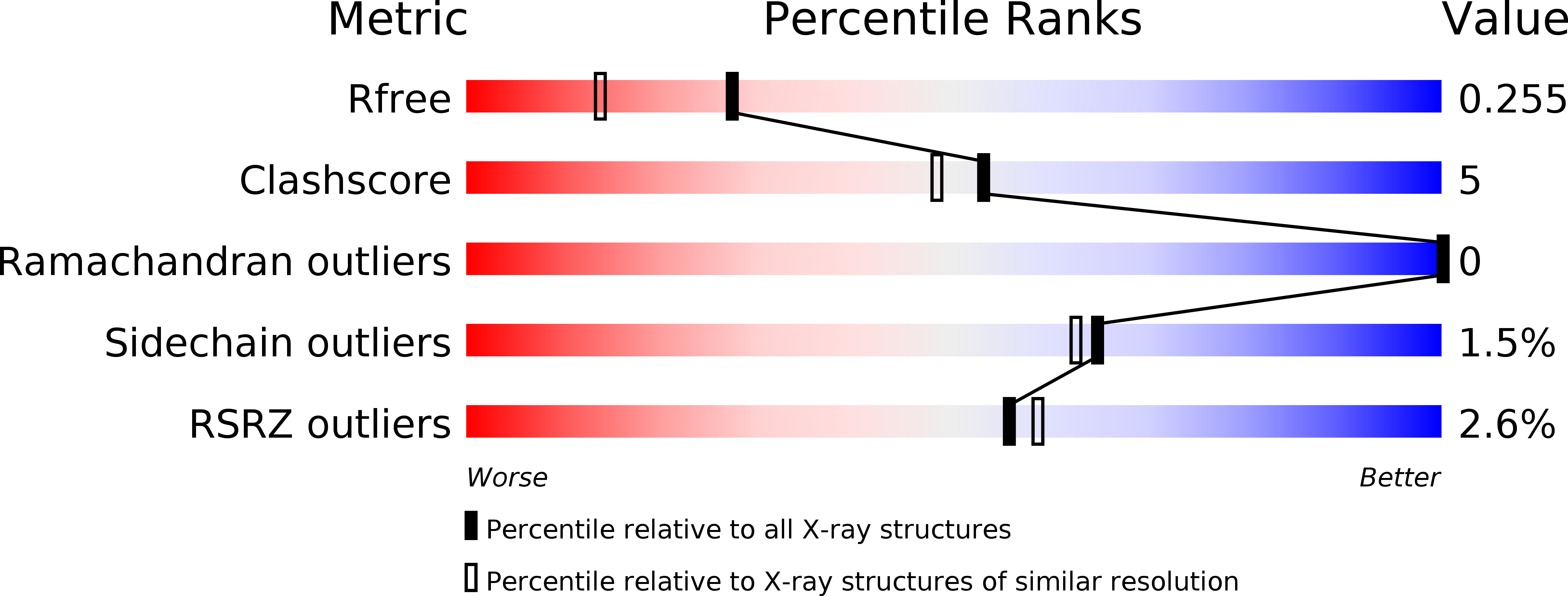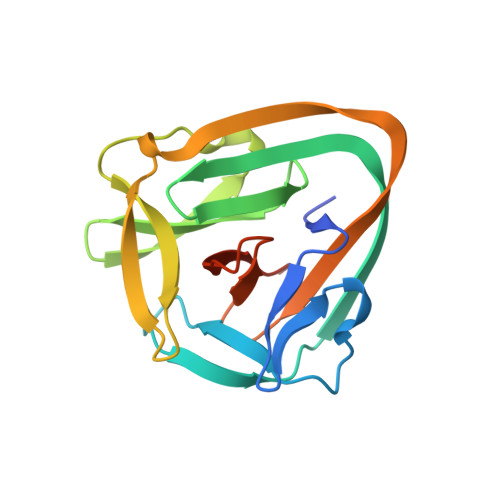Biochemical and Structural Characterization of an Unusual and Naturally Split Class 3 Intein.
Hoffmann, S., Terhorst, T.M.E., Singh, R.K., Kummel, D., Pietrokovski, S., Mootz, H.D.(2021) Chembiochem 22: 364-373
- PubMed: 32813312
- DOI: https://doi.org/10.1002/cbic.202000509
- Primary Citation of Related Structures:
6ZGQ - PubMed Abstract:
Split inteins are indispensable tools for protein engineering because their ligation and cleavage reactions enable unique modifications of the polypeptide backbone. Three different classes of inteins have been identified according to the nature of the covalent intermediates resulting from the acyl rearrangements in the multistep protein-splicing pathway. Class 3 inteins employ a characteristic internal cysteine for a branched thioester intermediate. A bioinformatic database search of non-redundant protein sequences revealed the absence of split variants in 1701 class 3 inteins. We have discovered the first reported split class 3 intein in a metagenomics data set and report its biochemical, mechanistic and structural analysis. The AceL NrdHF intein exhibits low sequence conservation with other inteins and marked deviations in residues at conserved key positions, including a variation of the typical class-3 WCT triplet motif. Nevertheless, functional analysis confirmed the class 3 mechanism of the intein and revealed excellent splicing yields within a few minutes over a wide range of conditions and with barely detectable cleavage side reactions. A high-resolution crystal structure of the AceL NrdHF precursor and a mutagenesis study explained the importance and roles of several residues at the key positions. Tolerated substitutions in the flanking extein residues and a high affinity between the split intein fragments further underline the intein's future potential as a ligation tool.
Organizational Affiliation:
Institute of Biochemistry, University of Muenster, Corrensstraße 36, 48149, Münster, Germany.















